The vehicle with the Cummins ISF2.8 power plant is equipped with the 5295576 Dixie Auto Electric starter
The starter is a DC electric motor with electromagnetic excitation.
The starter has four poles.
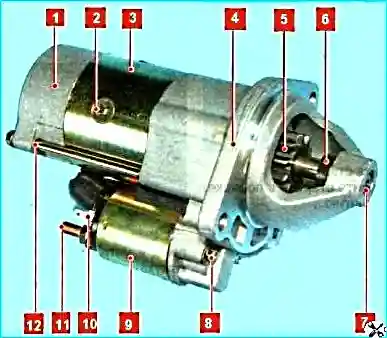
A traction relay with two windings, a pull-in winding and a holding winding, is installed on top of the starter.
When the key in the ignition switch is turned to position "II", the power supply circuit of the traction relay windings is closed.
The relay anchor is pulled in and, through the lever, engages the starter gear with the engine flywheel ring gear.
At the end of the stroke, the anchor turns on the starter power supply circuit and simultaneously disconnects the pull-in winding of the relay (power is supplied only to the holding winding).
When the key in the ignition switch is returned to position "I", the power supply circuits of the starter and the holding winding are disconnected, and under the action of the spring, the anchor disengages the starter gear from the flywheel ring gear.
Rated power starter 5295576 — 2.5 kW.
Removing the starter
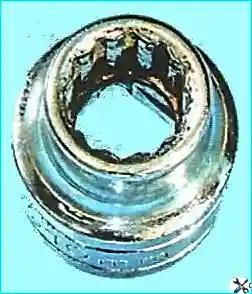
You will need a 13 key and a 12-sided socket head for 10
We must disconnect the negative terminal of the battery!
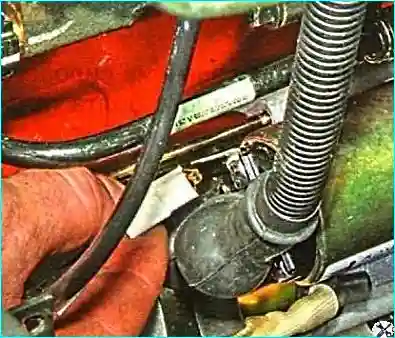
Disconnect the control drive block from the traction relay
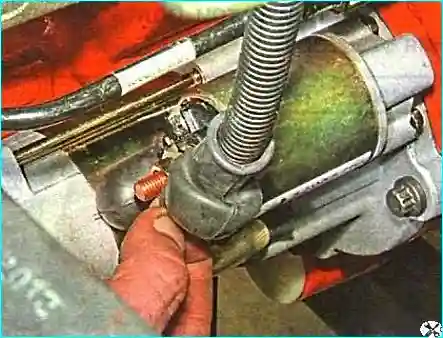
Remove the protective cap from the contact bolt of the traction relay and slide the cap
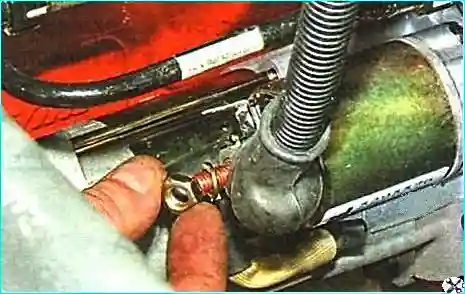
Unscrew the nut securing the power cable tip
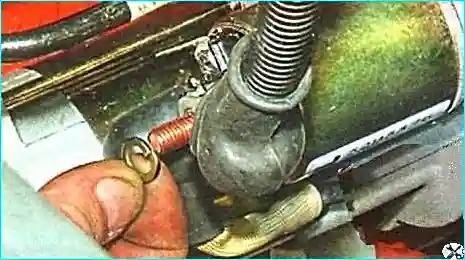
Remove the mounting washer underneath it
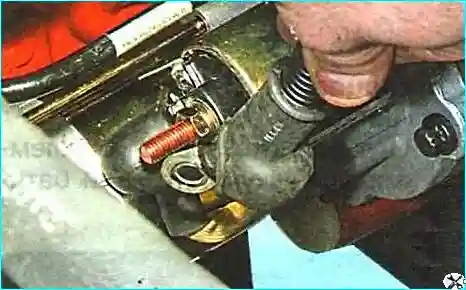
Remove the tip of the power cable from the contact bolt of the traction relay
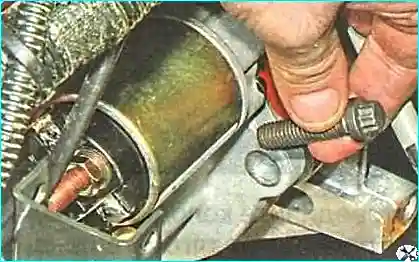
Unscrew the three bolts securing the starter
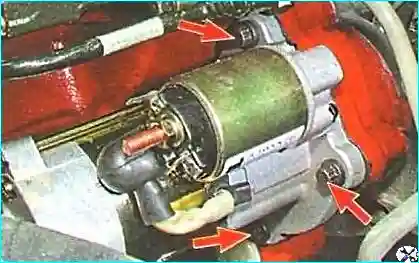
This is how the bolts securing the starter are located
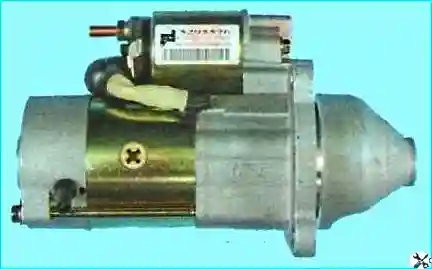
Removing the starter. Install the starter in the reverse order.
Possible starter malfunctions
- - Cause of malfunction - How to fix
The starter does not turn on:
- - Battery is faulty - Replace the battery
- - Battery terminals are oxidized - Clean and tighten the terminals and wires going to the battery
- - Ignition switch is faulty - Replace the contact group or ignition switch
- - Solenoid relay is faulty - Replace the solenoid relay
- - Starter is faulty - Repair or replace the starter
The solenoid relay turns on, but the starter rotor does not rotate or rotates too slowly:
- - Battery is discharged - Charge or replace the battery
- - Oxidation to battery terminals and wire ends - Clean and secure the terminals and wires
- - Loose tightening of the nuts securing the wire ends to the terminals of the traction relay - Tighten the nuts
- - Faulty starter - Repair or replace the starter
The traction relay turns on and immediately turns off (frequently repeating knock):
- - Severely discharged battery - Charge or replace the battery
- - Increased resistance of the starter power supply circuit - Clean and secure the wire ends, replace faulty wires
- - Faulty ignition switch - Replace the ignition switch contact group
- - Faulty traction relay - Replace the traction relay
The starter turns on, but the crankshaft does not engage:
- - Nicks on the teeth of the drive pinion or flywheel ring gear - Remove nicks or replace the flywheel or starter drive
The starter engages, but the pinion does not engage:
- - Nicks on the teeth of the drive pinion or flywheel ring gear - Remove nicks or replace the flywheel or starter drive
The starter does not engage after starting the engine:
- - The key is stuck in the ignition switch in the «|» position - Repair or replace the mechanical part of the ignition switch
- - Ignition switch (lock) contacts short-circuit - Replace the ignition switch (lock)
- - Starter is faulty - Repair or replace the starter
Increased noise when the starter rotor rotates:
- - Starter mount is loose - Tighten the starter mounting bolts
- - Starter drive gear teeth are damaged - Replace or repair the starter, replace the engine flywheel
- - Starter is faulty - Replace or repair the starter





